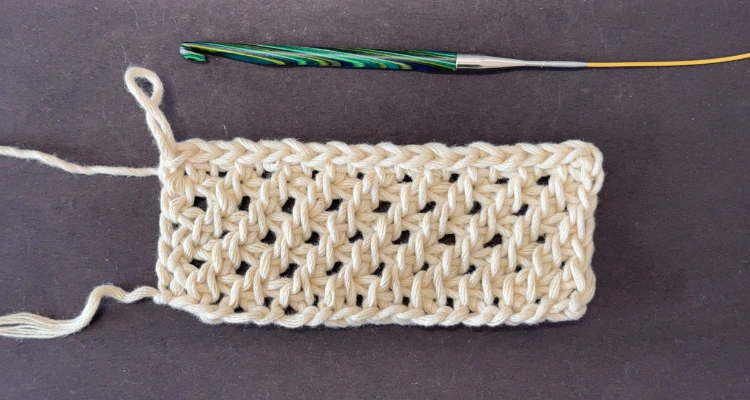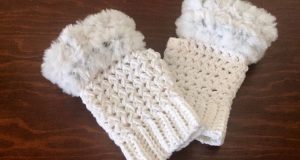If you’re a tunisian crochet enthusiast looking to add a new stitch to your mental craft library, the Clover Stitch tunisian crochet tutorial is a must-try! This textured stitch blends a modified simple stitch with yarn overs to create a lace-like, airy design, making it perfect for a variety of projects. Whether you’re crocheting a lightweight summer top, a cozy scarf, or even a decorative table runner, the Clover Stitch will bring a unique texture and sophistication to your work.
With just a few simple techniques, you’ll create a fabric that’s not only beautiful but also incredibly functional. Let’s explore a few project ideas for the Clover Stitch in this tunisian crochet tutorial.
Perfect Projects for the Clover Stitch
The Clover Stitch’s airy design makes it a versatile choice for many crochet projects. Its open-work texture creates a balance of structure and flow, giving any piece a modern and elegant touch. Here are a few project ideas to spark your creativity:
1. Wearables
This is my favorite project category! The Tunisian Cabriolet Hug (link coming Tuesday) is a great example of a versatile wearable as it’s cozy and flows without the fabric feeling stiff or thick. The Clover Stitch will work perfectly for summer tops, tunics, and cardigans, creating breathable garments that drape beautifully. Its lacy effect adds just the right amount of flair without being overwhelming.
2. Accessories
Tunisian crochet is always a win for crochet accessories, such as scarves, wraps or shawls. The Clover Stitch adds a polished, sophisticated look to these pieces, especially if you choose a variegated color way. Imagine a lightweight scarf that transitions perfectly from chilly mornings to breezy afternoons!
3. Home Décor
Looking to add a handmade touch to your living space? A blanket in a neutral color or accent color that matches your other decor can be draped across the sofa and be easily accessible. Take notes from vintage patterns to make a short curtain for a small window, or grab cotton to make placemats for summer table settings.
4. Baby Items
If you love making large blankets, of course this tunisian stitch will work for a smaller blanket that will easily become a favorite blanket for an infant or toddler. The Clover Stitch is a great choice for keepsake-quality pieces.
Whether you’re crafting for yourself, your home, or someone special, the Clover Stitch’s versatility makes it a fantastic choice. Once you get the hang of it, you’ll find endless possibilities for incorporating it into your projects!
Tunisian Crochet Tutorial Materials & Tools
Before you get started with the Clover Stitch, it’s important to gather the right materials and tools. Using the right supplies ensures your stitches are smooth, your fabric is even, and your finished piece truly shines. Here’s what you’ll need:
1. Tunisian Crochet Hook
- Recommended: A tunisian crochet hook with a cable attachment is ideal for larger projects, as it allows your stitches to sit comfortably without bunching up. To learn this stitch, you can use a tunisian crochet hook without a cable but a stopper so that the loops don’t slip off the end during the forward pass.
- For practice: A standard tunisian hook works well for smaller swatches or projects like scarves or placemats. If you don’t have any tunisian crochet hooks yet, you can use a straight crochet hook that doesn’t have a thumb rest. The thumb rest can stretch the loops and impact the gauge. (not that gauge is important when learning and practicing a new stitch .😉)
2. Yarn
The right yarn can make all the difference when it comes to creating a larger project, but for learning purposes, choose an easy to see color, smooth fiber and DK or worsted weight yarn. Avoid any yarns with a halo or fibers that stick out, as they tend to catch each other, which makes frogging harder.
If you want or need to practice with a bulky weight to more clearly see the stitches, then ensure that you use a hook that is large enough for a bulky.
A rule of thumb for tunisian crochet is to use a size that is two sizes larger than what is recommended on the yarn label. For example a bulky weight yarn may suggest a size K (6.5 mm) hook, so I would start with 8mm or larger tunisian hook.
With these materials, you’ll be well-prepared to practice the Clover Stitch and create beautiful, functional pieces. Don’t be afraid to experiment with different yarn colors and textures to bring your projects to life!
Stitch Multiple and Row Repeat
I love a tunisian crochet stitch that is easy to remember once it’s learned, such as the Clover stitch. There isn’t a large stitch multiple. Actually, you can make a chain that is any odd number. After the foundation row is created, there is only 2 rows to learn that are repeated.
Chain: any odd number
Row Repeat: 2 rows
ABBREVIATIONS
Ch: chain
FwdP: forward pass
FO: fasten off
M: stitch marker(s)
Mod tss: modified tunisian simple stitch
Rem: remain(s)(ing)
Rep: repeat
RetP: return pass
Sk: skip
Sl st: slip stitch
Sp: space
St(s): stitch(es)
Tss: tunisian simple stitch
YO: yarn over
SPECIAL STITCHES & TECHNIQUES
End St: insert hook under both loops of the last st, YO and pull up a loop.
Mod tss: insert hook under the YO the row below (leaning bar) and top ch, YO and pull up a loop
RetP: Ch 1, *YO, draw through 2 loops, rep from * across until 1 loop rem on hook.
Tunisian Crochet Tutorial: Step-by-Step
1. Ch 19 or any odd number
2. Starting in 2nd ch, insert hook in back bump,
3. YO and pull up a loop, *YO, sk next ch, insert hook in next ch,

3. YO and pull up a loop, rep from * until 1 ch rem, end st.

4. RetP: Ch 1, *YO and pull through 2 loops, rep from * to end.

5. (Start of Row 2) *YO, sk next st, insert hook under the YO the row below and top ch, YO and pull up a loop (this makes a mod tss)

6. Rep from * until 2 sts rem, YO, sk next st, end st.
7. RetP: Ch 1, *YO and pull through 2 loops, rep from * to end.

8. (Start of Row 3) *insert hook under the YO the row below and top ch, YO and pull up a loop, YO, sk next st,

9. Rep from * until 1 st rem, end st.
10. RetP.

11. Rep Steps 5-10 until desired length.
12. Binding off (closing the stitches): ch 1, *sl st in vertical bar, sl st like a mod tss, rep from to end, FO.
NOTE: The bind off row may be the opposite of these instructions, if your last row was a repeat of Steps 5-7


Pin this tunisian crochet tutorial to practice later
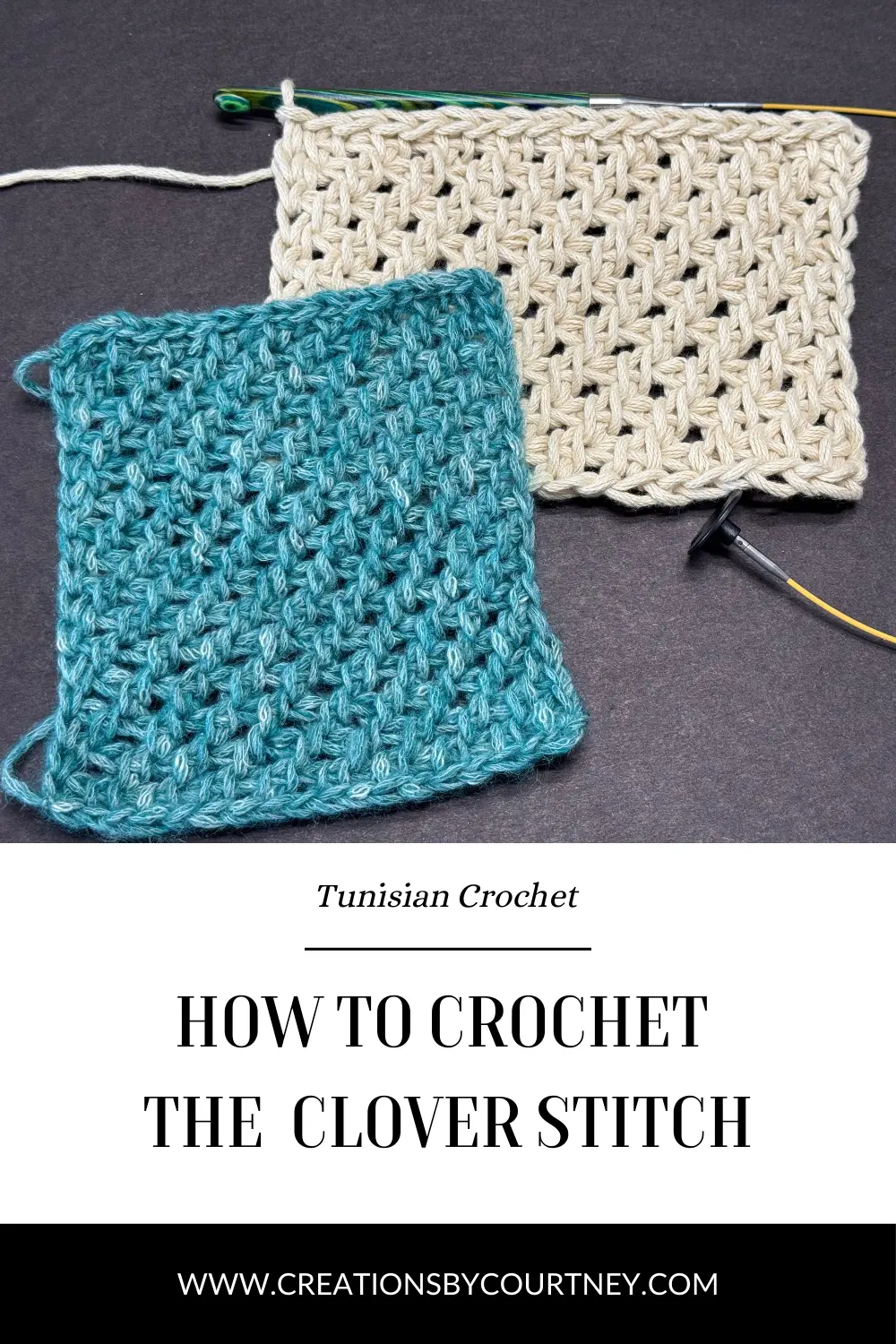
Pattern Instruction Format
Ch 19 or any odd number
Row 1: Starting in 2nd ch and working in back bump, tss, *YO, sk next ch, tss in next ch, rep from * until 1 ch rem, end st. RetP.
Row 2: *YO, sk next st**, mod tss, rep from * until 1 st rem, ending last rep at **, end st. RetP.
Row 3: *Mod tss, YO, sk next vertical bar, rep from * until 1 st rem, end st. RetP.
Next Rows: Rep Rows 2-3 until desired length
Bind off: Ch 1, sl st in each mod tss and tss across, FO.
Prefer video tutorials?
I got you!
This tunisian crochet stitch is straightforward once you know where to insert your hook. Even as an experienced crocheter, it never hurts to watch a video of a new to you crochet stitch to ensure success with the first attempts.
Just click the image below to watch a full tunisian crochet tutorial of the Clover Stitch.
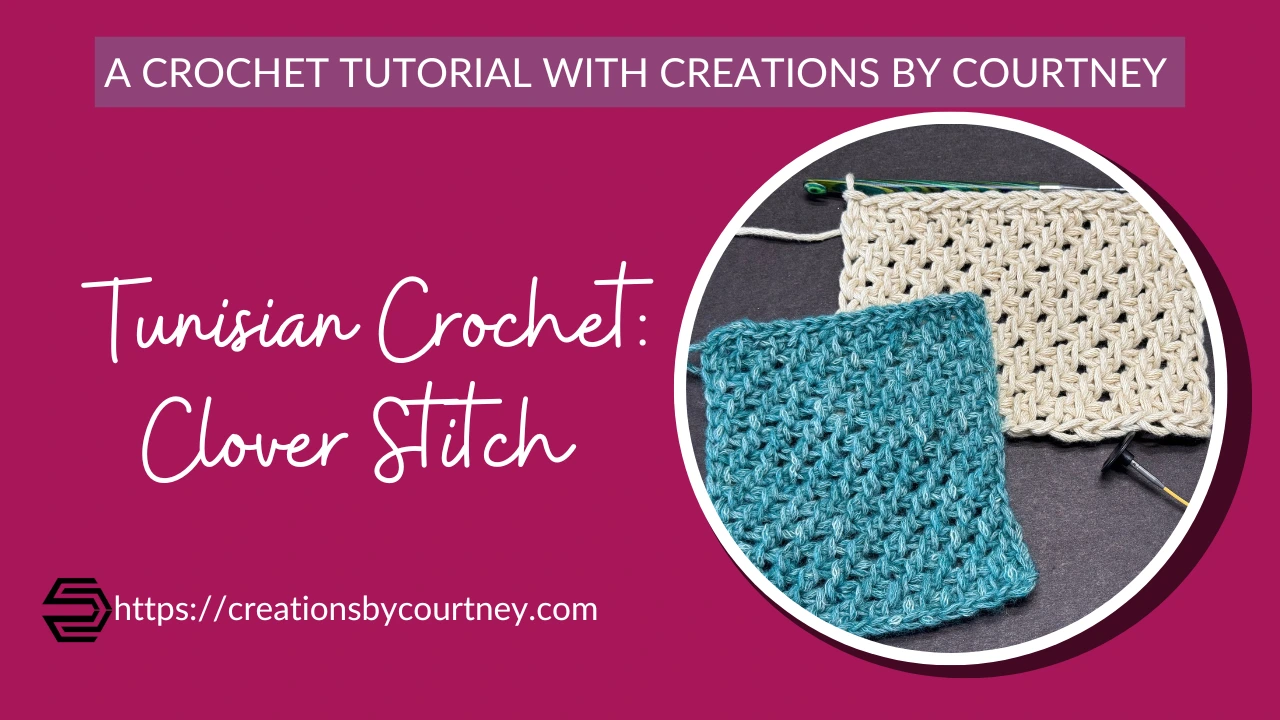
Tips for Beginners
If you’re new to tunisian crochet, it helps to take some time to learn the anatomy of Tunisian crochet stitches. In this tunisian crochet tutorial to create the modified tunisian simple stitch, we use the top chain. This chain is created during the return pass of each row, the yarn over and pull through 2 loops step. You’ll use the top loop of this chain to make the modified tunisian simple stitch.
Just like when you first learned to crochet, you practiced daily. It’s the same with tunisian crochet. Practice at least 10 minutes each day when learning new stitches to build the muscle memory. This will reduce the amount of time you spend reviewing the basic steps.
When you’re ready to start an entire project, you CAN make the Tunisian Cabriolet Hug, as it’s like making a wide scarf or wrap two times. If making a crochet wearable feels intimidating, make a headband or ear warmer first, then jump over the convertible wearable. 🙂
You’ve got this—trust yourself, and enjoy the process!
Did you enjoy this tunisian crochet tutorial?
The Clover Stitch offers the rhythmic pattern we all love about tunisian crochet, but an easy lace pattern that creates a flow fabric. This stitch can be used for garments, accessories and home decor. It will not work well for baskets or anything that requires structure.
Now that you know what makes the Clover Stitch special, the types of projects it’s perfect for, and the tools you’ll need to get started, it’s time to grab your hook and yarn! Practice with a small swatch to get a feel for the pattern, and don’t be afraid to experiment with colors, textures, and yarn types to make it your own.
Once you’ve nailed the stitch, use it to bring your ideas to life—and be sure to share your creations with the crochet community!
Learn more with these crochet tutorials
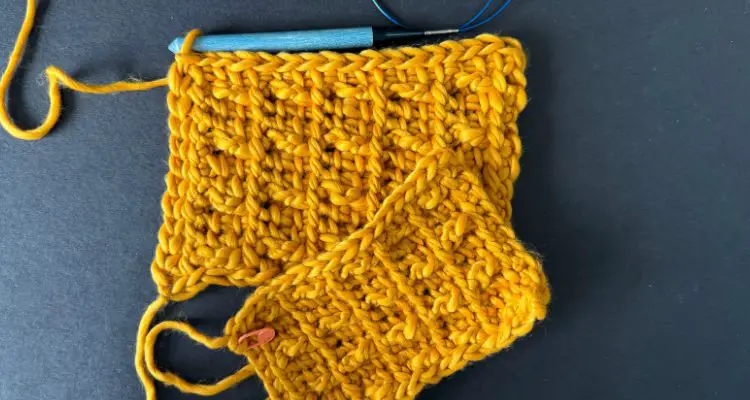
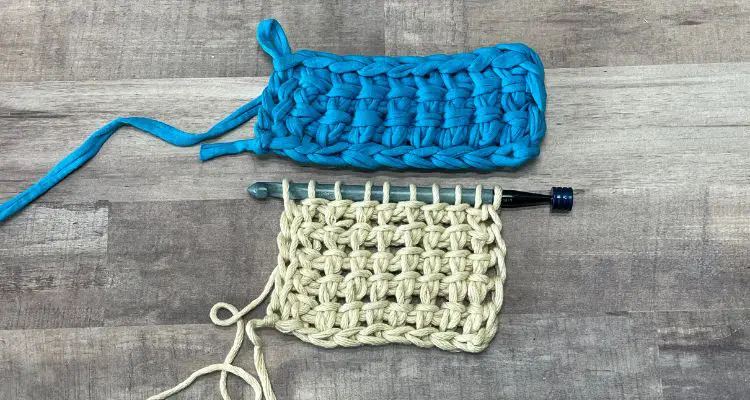
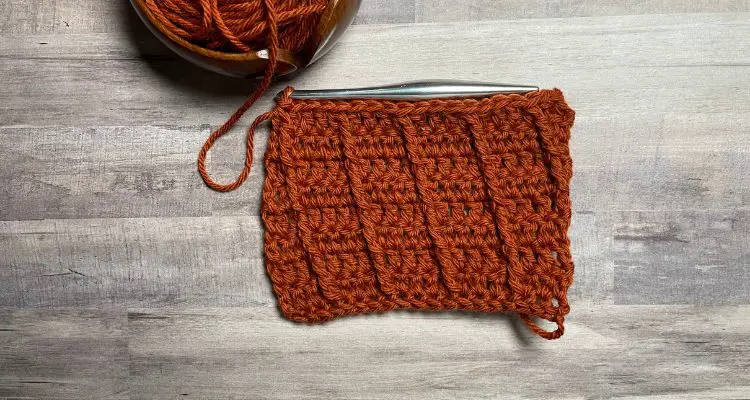
Let’s Connect!
Want to talk about yarn goodness, crochet tips, and more? Join my Facebook Group, Confidently Crochet with Creations By Courtney.
If we’re not hanging out on social media yet, come check me out on Facebook, Instagram
Follow me on Pinterest for pattern inspiration.
Join my newsletter for sneak peeks, crochet tips, and more.
Use #CreationsByCourtney on social media when sharing your projects.
This tutorial is not to be duplicated, sold, and not to be reproduced commercially. Please credit Creations By Courtney as the tutorial author.

